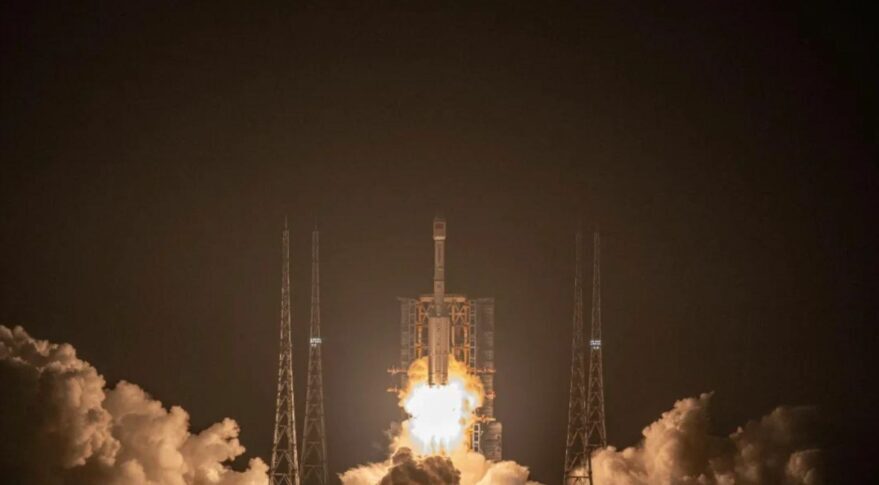15.09.2022

HELSINKI — China launched a Long March 7A rocket Tuesday, successfully inserting the Zhongxing-1E satellite into geosynchronous transfer orbit.
A Long March 7A lifted off from Wenchang spaceport on Hainan island at 9:18 a.m. Eastern Sept. 13. The China Aerospace Science and Technology Corp. (CASC), the country’s main space contractor, announced launch success just under 40 minutes later, also confirming the previously unannounced payload.
Zhongxing-1E (ChinaSat-1E) is described as being for providing “high-quality voice, data, radio and television transmission services,” according to Chinese state media.
The vague description of the satellite matches statements for earlier Zhongxing-1 series satellites. The lack of information and images of the satellite suggests that the satellite series serves military customers.
The satellite was developed by the China Academy of Space Technology (CAST), a major spacecraft maker belonging to CASC.
The previous satellite in the series, Zhongxing-1D, launched in November 2021. Notably, that mission used a Long March 3B, launching from the southwestern, inland spaceport at Xichang.
The switch of launcher and spaceport for the Zhongxing-1E launch, along with wording in a CAST press release, suggests a larger, heavier satellite bus than earlier satellites. The satellite was also transported by ship from Tianjin to Wenchang, whereas satellites are flown to Xichang.
It is also possible CASC is looking to use the Long March 7A more often for launches to GTO rather than relying mainly on the aging, hypergolic Long March 3B.
The Long March 7A is a 60.1-meter-long, 3.35-meter-diameter kerosene and liquid oxygen launch vehicle with four side boosters, capable of delivering up to 7 metric tons of payload to GTO.
The Long March 7A is more capable than the older Long March 3B, which can launch 5.5 tons to GTO. By launching from the coast, the Long March 7A avoids the cost and hazards of the inland 3B launches, which have seen spent boosters fall on inhabited areas, and also has the advantage of launching from a lower latitude.
The first Long March 7A launch took place in March 2020 and ended in failure. The second flight a year later successfully inserted Shiyan-9 into geosynchronous transfer orbit.
The previous Long March 7A rocket launched a pair of Shiyan-12 satellites encapsulated in an elongated payload fairing in December 2021.
The two spacecraft are believed to be Chinese inspector satellites for geosynchronous orbit and have been involved in a game of cat and mouse with USA 270.
CASC stated in its Zhongxing-1E press release that it is developing a new, wider 5.2-meter diameter fairing to further improve the rocket’s adaptability.
Tuesday’s mission was China’s 38th orbital launch of 2022. CASC has planned more than 50 launches across the year and is currently gearing up to launch the third and final module for the Tiangong space station.
Chinese companies including Expace, Galactic Energy, Landspace, iSpace and CAS Space are also conducting their own launches during the year.
Quelle: SN
+++
China launches Zhongxing-1E satellite
China successfully sent a new satellite into space from the Wenchang Spacecraft Launch Site in the southern island province of Hainan on Tuesday.
The satellite, Zhongxing-1E, was launched at 9:18 p.m. (Beijing Time) by a modified version of the Long March-7 carrier rocket and entered the planned orbit successfully. It will provide high-quality voice, data, radio and television transmission services.
This was the 437th mission for the Long March series carrier rockets.

Quelle: Xinhua

